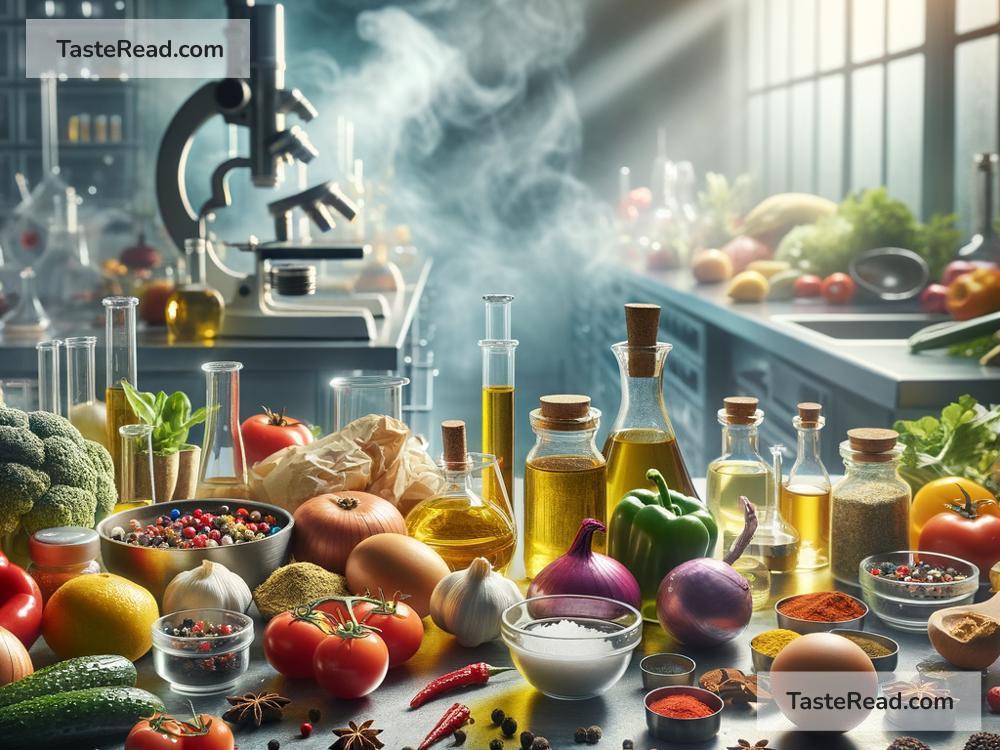The Science of Cooking with Chemical Finesse: Techniques and Tips
Cooking is more than just mixing ingredients and heating them up. It’s an intricate blend of art and science, where flavors, textures, and aromas come together through chemistry. Ever wonder why bread rises, why meat gets tender, or why caramel tastes so heavenly? It’s all thanks to chemical reactions happening behind the scenes!
In this blog, we’ll dive into the science of cooking and share some simple techniques and tips you can use in your kitchen to master your meals with a touch of chemical finesse. Don’t worry if science feels intimidating—it’s simpler (and tastier) than you think!
The Magic of Heat: Cooking as Chemistry in Action
One of the most basic elements of cooking is heat. When you apply heat to food, chemical bonds break, molecules transform, and flavors develop. Here are a few examples:
- Maillard Reaction: The Golden Brown Delight
Ever notice how a seared steak or toasted bread has a deep, rich flavor? That’s the Maillard reaction at work! When proteins (amino acids) and sugars in food meet heat, they rearrange into hundreds of new compounds, creating complex flavors and giving food its golden-brown color.
Tip: To get the best Maillard reaction, make sure your food is dry before cooking. Pat dry your meat with a paper towel before searing and avoid overcrowding the pan—more moisture means less browning.
- Caramelization: Sweet, Sticky Science
Caramelization happens when sugar breaks down under intense heat, creating a more robust, sweet flavor. This is what makes caramel, roasted vegetables, and baked goods so mouthwatering.
Tip: If you’re caramelizing sugar, stir gently and evenly to prevent burning. For veggies, slice them evenly so they caramelize uniformly in the oven.
The Chemistry of Proteins: Tenderizing and Shaping Food
Proteins—found in meat, eggs, and dairy—change their structure when cooked. This process is called denaturation and is key to tenderizing meat, shaping dishes, and creating textures.
- Tender Meat with Marinades
Acids like vinegar, lemon juice, or yogurt help break down tough muscle fibers (proteins), making meat softer and juicier. Enzymes found in fruits like papaya or pineapple also work as natural tenderizers.
Tip: Don’t over-marinate! Meat can get mushy if left in acidic marinades for too long. Aim for 30 minutes to a few hours, depending on the cut.
- Perfect Eggs Every Time
Proteins in eggs are highly sensitive to heat. Too much heat creates rubbery eggs, while just the right amount delivers creamy, fluffy textures.
Tip: Cook scrambled eggs on low heat and stir constantly for soft, silky results. For boiled eggs, simmer them instead of boiling to avoid overcooking.
The Wonders of Starch: Thickening and Structure
Starch, found in foods like potatoes, rice, and flour, absorbs water and expands when heated. This process, called gelatinization, gives body and structure to dishes like sauces, soups, and baked goods.
- Mastering Sauces
Flour and cornstarch are common thickeners in cooking, but they behave differently. Cornstarch thickens faster and gives a glossy finish, while flour adds richness but requires longer cooking to remove its raw taste.
Tip: To avoid lumps, dissolve flour or cornstarch in cold water before adding it to hot liquid. Stir continuously for a smooth texture.
- Achieving the Perfect Bake
Starch works with gluten in flour to provide structure to cakes, cookies, and bread. Baking is particularly scientific, as you’re balancing starch, proteins, fats, and sugars to trap air and create a fluffy final product.
Tip: Measure your ingredients carefully—baking is chemistry, and small changes can dramatically affect results. Use a kitchen scale for accuracy.
Balancing Flavors: Acid, Salt, and Sweetness
Chemistry isn’t just about texture. It’s also about flavor balance. Cooking combines salty, sweet, sour, bitter, and umami (savory) flavors to create harmony.
- Acid Brightens Dishes
Acid like lemon juice or vinegar cuts through richness and adds freshness to your dish.
Tip: If your dish feels heavy or dull, add a splash of acid. For example, squeeze some lemon juice over roasted vegetables or drizzle balsamic vinegar on a salad.
- Salt Enhances Everything
Salt doesn’t just make food salty—it brings out other flavors by interacting with your taste buds. It’s a simple but powerful tool for flavor enhancement.
Tip: Season your food in layers. Add salt as you cook, and taste along the way—you’ll never end up with bland food again.
- Sugar Balances Out Bitterness
Sugar helps counteract bitterness in foods like coffee, tomato sauces, and even stir-fries.
Tip: Don’t go overboard—just a small pinch of sugar can make a big difference.
The Importance of Experimenting
Cooking with science isn’t rigid. It’s about understanding the basics and then experimenting to find your own style. Adjust heat, timing, and ingredients to make dishes uniquely yours!
Final Thoughts
The science of cooking is genuinely fascinating and accessible to everyone. By understanding the chemical reactions behind food, you can unlock new flavors, textures, and results that will impress family and friends. Remember, every time you step into the kitchen, you’re not just cooking—you’re conducting delicious experiments.
So the next time you sauté an onion, bake a cake, or marinate chicken, take a moment to appreciate the chemistry happening behind the scenes. Cooking really is a science—with a whole lot of heart!
Happy cooking!


